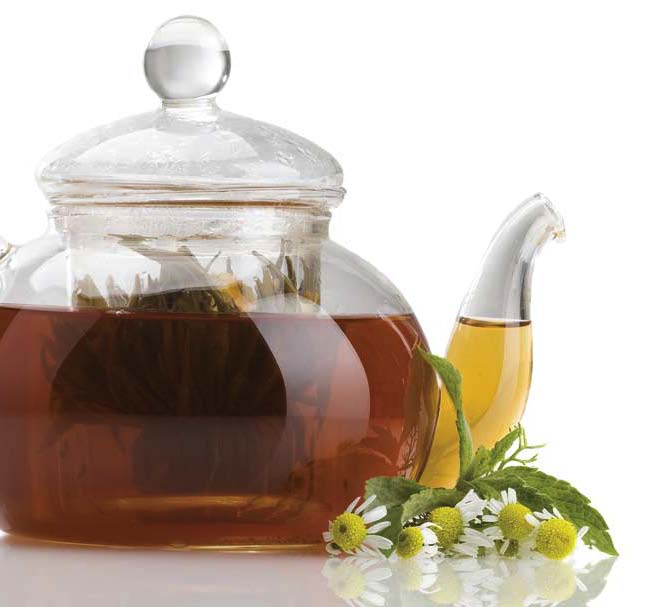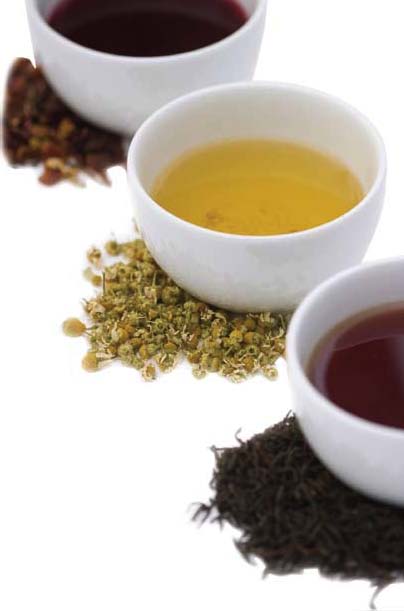Tea Party
The venerable tea leaf takes center stage
Tea, the delightfully aromatic yet relatively simple beverage produced essentially from the cured leaves of only one species of plant called Camellia sinensis then blended with water, is the second most widely consumed liquid (behind water) in the world. Herbal teas, which are becoming more popular, are not true teas, but rather dried herbs and/or flowers. Whether you enjoy yours iced, sweet, hot, with milk, honey or lemon, tea is a tasty treat that is said to promote good health, both inside and out, and cure many common ailments. This ancient cultural essential has been steeped in myth and legend throughout the ages, and with more than 700 chemicals per tea leaf, it’s easy to understand why. While there are thousands of varieties, styles and flavors of teas on the market, there are merely five major types: white, black, green, pu-erh and oolong. Others would toss in two other unconventional categories, those being blends and herbal infusions. In honor of National Tea Month, we are pleased to offer you this delightful spot of tea!
White Tea: One of the most rare and expensive teas available, it is picked before the buds fully open and are still covered with fine, silky hairs. The colorless liquid has a delicate flavor, slightly sweet with a nutty quality. It is said to have more than three times the amount of antioxidants than black or green tea and its polyphenols have shown to be effective in fighting aging and sagging skin.
Black Tea: Referred to as “red tea” by the Chinese due to its reddish-brown color, it is the most common kind of tea worldwide. Black tea is allowed to oxidize, which creates a robust, assertive flavor, an intensely dark color and magnifies the amount of caffeine.
Green Tea: Greenish-yellow in color, with a grassy, astringent quality reminiscent of the fresh leaves, green tea is not oxidized, but instead dried or oven fired to dehydrate the leaves for storage. This process helps to retain many of the chemicals that offer health benefits such as prevention of gum disease and increased antioxidant activity.
Oolong Tea: These leaves are allowed to oxidize for a period of time that falls between black and green tea, resulting in a smooth, fruity, floral, yellowish-amber-colored tea. Considered to be the finest of all teas, it is also the most expensive and due to its delicate flavors, is usually consumed without the addition of milk, sugar or lemon.
Pu-erh Tea: In a class all its own, this kind of tea differs from others in that a thin layer of mold is allowed to grow on the leaves producing a distinct earthy flavor. This flavor can be offensive to many, therefore pu-erh tea is often just ingested for medicinal purposes, as it is a proven aid for digestion.
Herbal Teas: Technically not tea at all since it does not contain leaves from the tea plant, herbal teas contain various flowers, herbs, spices, berries and fruits that are infused in boiling water to create unique concoctions. Usually caffeine-free, these herbal infusions, also called tisane, range from chamomile that is calming and may help alleviate insomnia, to peppermint, which us soothing on the stomach and aids in digestion.
Blends: A mix of several teas to achieve flavor consistency from one season to the next. Well-known blends include Earl Grey and English Breakfast.
